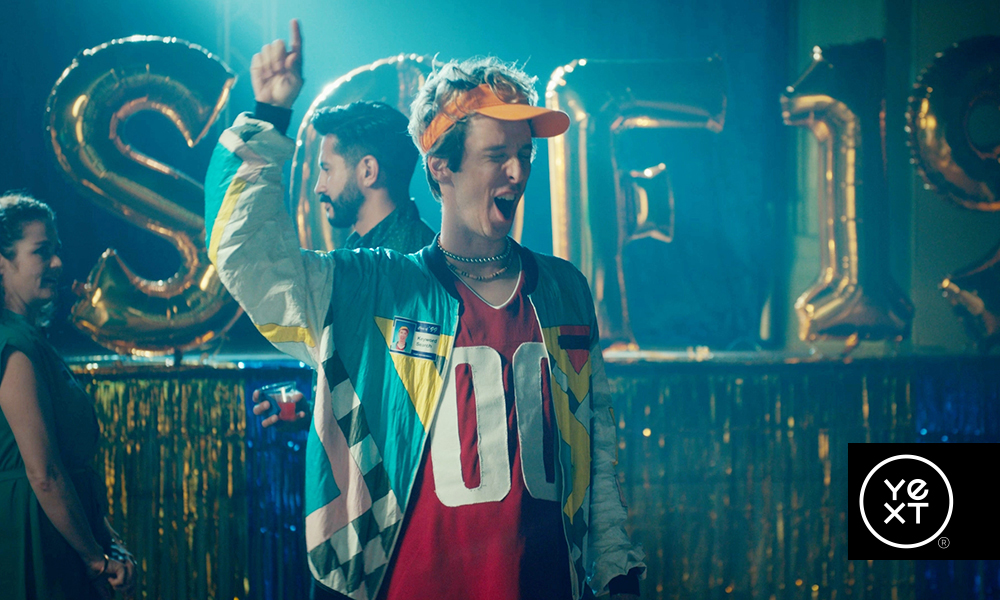
Welcome to the digital age. We've got self-driving cars, 5G Internet, and advanced technology improving virtually every aspect of life.
Well, almost.
One of those universal life activities is searching for information online. In doing so, we unknowingly rely on an outdated technology called “keyword search." You know the drill: you go to a brand’s website, type in a search, and get a list hyperlinks to comb through – many of which are irrelevant and unhelpful.
Search is practically a sixth sense: we almost unconsciously search online to manage our lives. From making appointments, finding store hours, understanding a refund policy, troubleshooting an issue – every online journey begins with a search. The popular convention is that search works great, but it doesn't. In fact, the search technology powering most businesses often brings that journey to a screeching halt.
No one really understands why it breaks down. So Yext decided to shed light on keyword search, the seemingly innocuous technology that sets businesses – and customers – back decades. We launched a ‘90s-themed integrated marketing campaign, including the TV commercial highlighted in our entry. The goal? To frame keyword search as the outdated “enemy” and position Yext as the modern solution, poised to help businesses eliminate keyword search and keep their customers moving along their journey.
We used humor and the nostalgia of the 90s to not only capture attention (of what could otherwise be a dull topic), but also draw parallels to the ridiculousness of using other ‘90s technology to run a business. We focused on reach, frequency, and engagement, and used a multimedia approach – from TV to DOOH to digital to social to print – to find and connect with our target audience throughout the year.
Because keyword search hasn’t evolved since 1999, we decided to lean into nostalgia marketing with a ‘90s theme — and humor — to effectively focus on and highlight the contrast between outdated search technology and Yext’s modern solution.
This theme features prominently in the crown jewel of our campaign, our national TV commercial produced in partnership with Sawhorse Productions in Los Angeles, which comically personifies different technologies as they return to their Class of 1999 high school reunion. The characters include a cell phone (“Cell Phone”), cloud storage (“Storage”), and internet (“Internet”) reflecting on how outdated they were in high school back in 1999 and how far they’ve come today. Enter the spot’s antagonist, “Keyword Search,” who hasn’t changed in looks, attitude, or efficacy since graduation, calling for the DJ to play “No Scrubs” on the dancefloor before busting out some equally outdated dance moves.
The commercial was accompanied by a comprehensive landing page, additional video content featuring the characters, full page ads to create awareness and build anticipation of the commercial’s reveal, and supportive digital marketing with Keyword Search as the “villain.”
It also complemented other assets of the campaign, including a physical CD-ROM distribution, an interactive "Escape the 90s" Y2K survival game, cameos from 90s stars like NSYNC's Lance Bass, a DOOH sponsorship with LinkNYC, and digital ads that look like old error messages.
Yext’s goal with this campaign was to raise awareness about both an industry issue and our own brand, increasing the reach of, traffic to, and engagement with platforms like our homepage and social channels. Our creative assets, including our commercial, put us in a position to do just that:
From April to June, we saw a 40.48% quarter-over-quarter (QoQ) increase in direct traffic to the Yext homepage and 121% QoQ increase in paid traffic.
In the same time period, we also experienced a 33% QoQ increase in new visitors to the homepage.
Taking into account all of our social channels, we saw a 90% QoQ increase in video views and a 45% QoQ increase in new followers. This success is significant because the majority of our work on social media is organic, not paid.
On LinkedIn, we experienced a 28% QoQ increase in impressions.
On Instagram, the commercial was our most commented, highest engagement, most shared, and highest reach post to date.
While getting our audience to engage with our campaign content on social media was important, we were also proud to see a number of people posting — proactively — across Twitter and LinkedIn about the assets they enjoyed.
Earned press about the campaign had a reach of over 560k, based on publication circulation.
Our DOOH activation generated 7.6MM impressions and frequency of 9, which is well above the industry benchmark.









